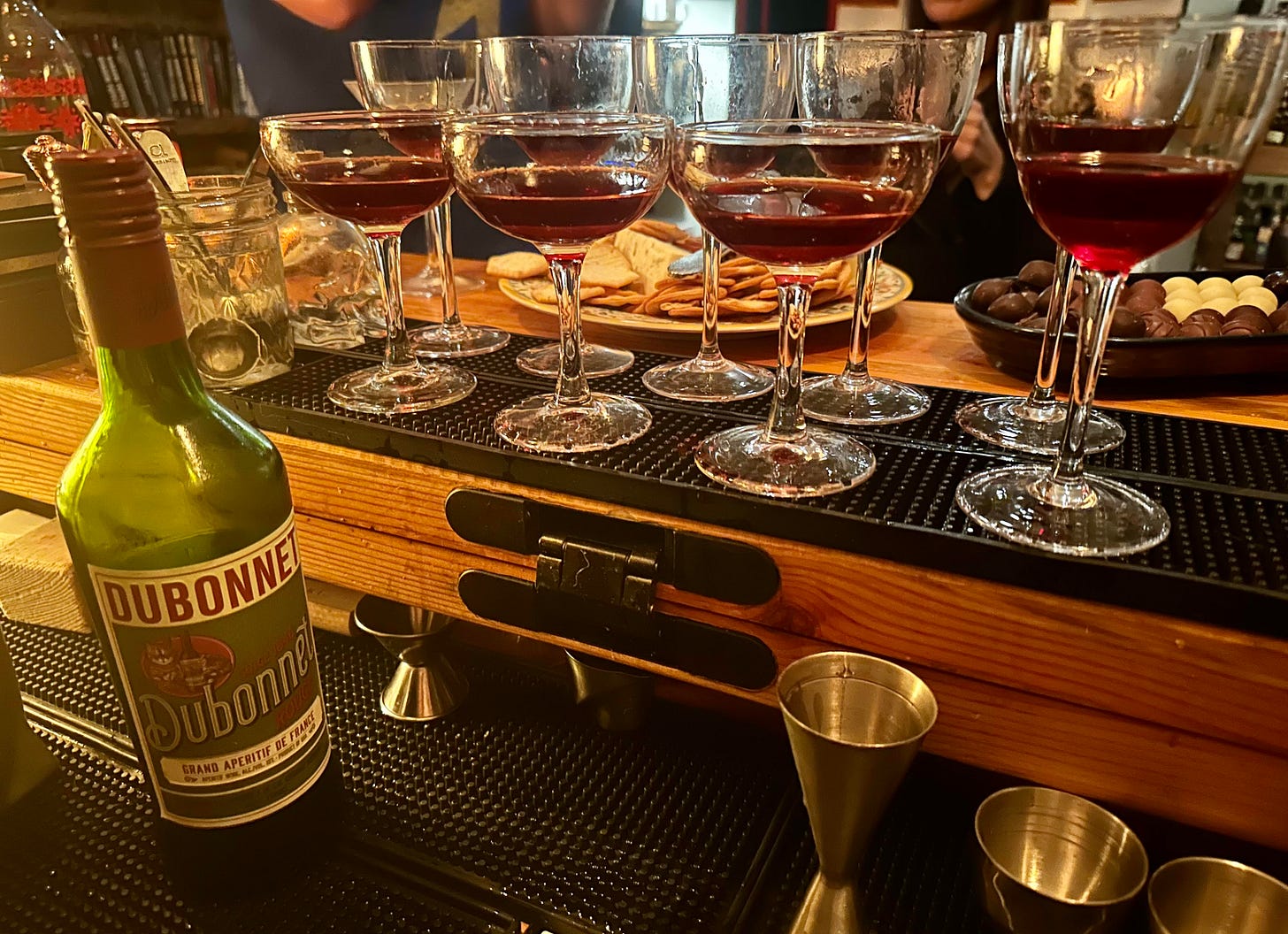An Introductory Guide to Workshopping Cocktails
Principles, tips, and exercises to develop your cocktail taste buds and improve your drink-making process
From time to time, I am asked how I have come to have such detailed opinions not on cocktails, generally, but on the fine minutiae of so many specific drinks. I can indeed measure my opinions in quarter ounces, in ratios and ingredients, in garnishes and shake times, in glassware and dilution levels.
To put it bluntly,I think that the small differences matter a lot. The difference between a great cocktail and a pretty good cocktail is often quite small. And sometimes that small gap is the difference between a great cocktail and a truly awful one.
Indeed, one of the chief aims of this newsletter is to stress that small differences matter a whole lot. After all, these days, almost anyone can pull up their phone, do a quick web search for a cocktail, and throw something together based on the first recipe Google picks out. It’s not really that hard.
What takes more work is fine-tuning those drinks, optimizing them into the best versions of themselves. The goal isn’t just to follow a recipe. It’s to understand how cocktails work and why.
To some extent that just takes time and experience. The more recipes you make, the more cocktails you taste, the more ingredients you work with, the more knowledgeable you’ll be.
But I do think there are ways to improve your cocktail-tasting game. And I do mean tasting. Because ultimately, it’s about learning to taste more than it is about learning to drink. The goal is to gather as much cocktail-related sensory information as possible, and then to find ways to retain, record, and systematize that information.
This probably sounds kind of…well, nerdy, at best — and possibly like a robotic and joyless way to approach cocktails. I’ll admit it’s not for everyone. But it’s actually pretty fun, especially if you enjoy both making things and making things better. As I’ve occasionally said: I view cocktail-making as an engineering project as much as an art. Engineers need to understand basic forms and structures, different materials and specifications, and how to adapt those to different projects and contexts. The same goes for making cocktails.
So this week, we’re going to do something a little bit different. Instead of examining a single drink or drink category, we’re going look at a few basic tips and broad principles improving your cocktail-tasting-IQ.
And them, at the end, we’ll do a couple of exercises using easy-to-make classics — the Negroni, the Old Fashioned, and the Daiquiri — to demonstrate how to put these ideas into practice with yourself and with friends. Think of it as an introductory guide to setting up your own cocktail workshop.
An Information War
As I said, the goal is to acquire, process, retain, and organize as much relevant taste information as possible. And the best way to do that is to taste a lot of drinks — which is not quite the same as drinking a lot of drinks.
Broadly speaking, then, if you want to improve your tasting abilities and you overall cocktail knowledge, you should…
Take notes on what you make and taste.
Taste with other people present, and compare their impressions with yours.
Taste ingredients individually, in small amounts, preferably in comparison with other similar ingredients.
Set up tasting flights of drinks with very small differences — different spirits in the same category, slightly different ratios, slightly altered versions of the same homemade ingredient, and so on.
Let’s take these individually.



